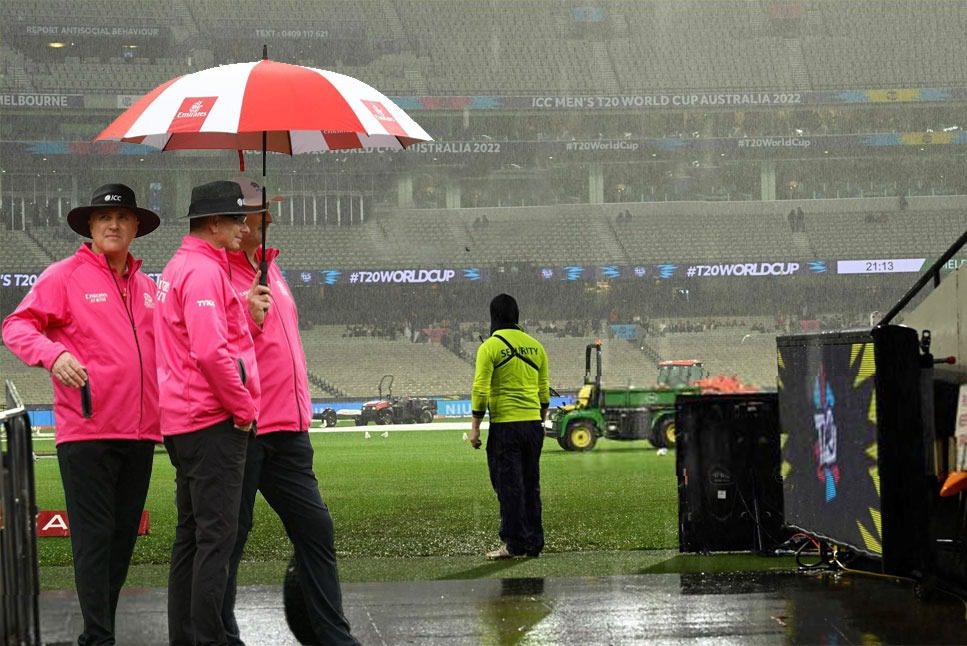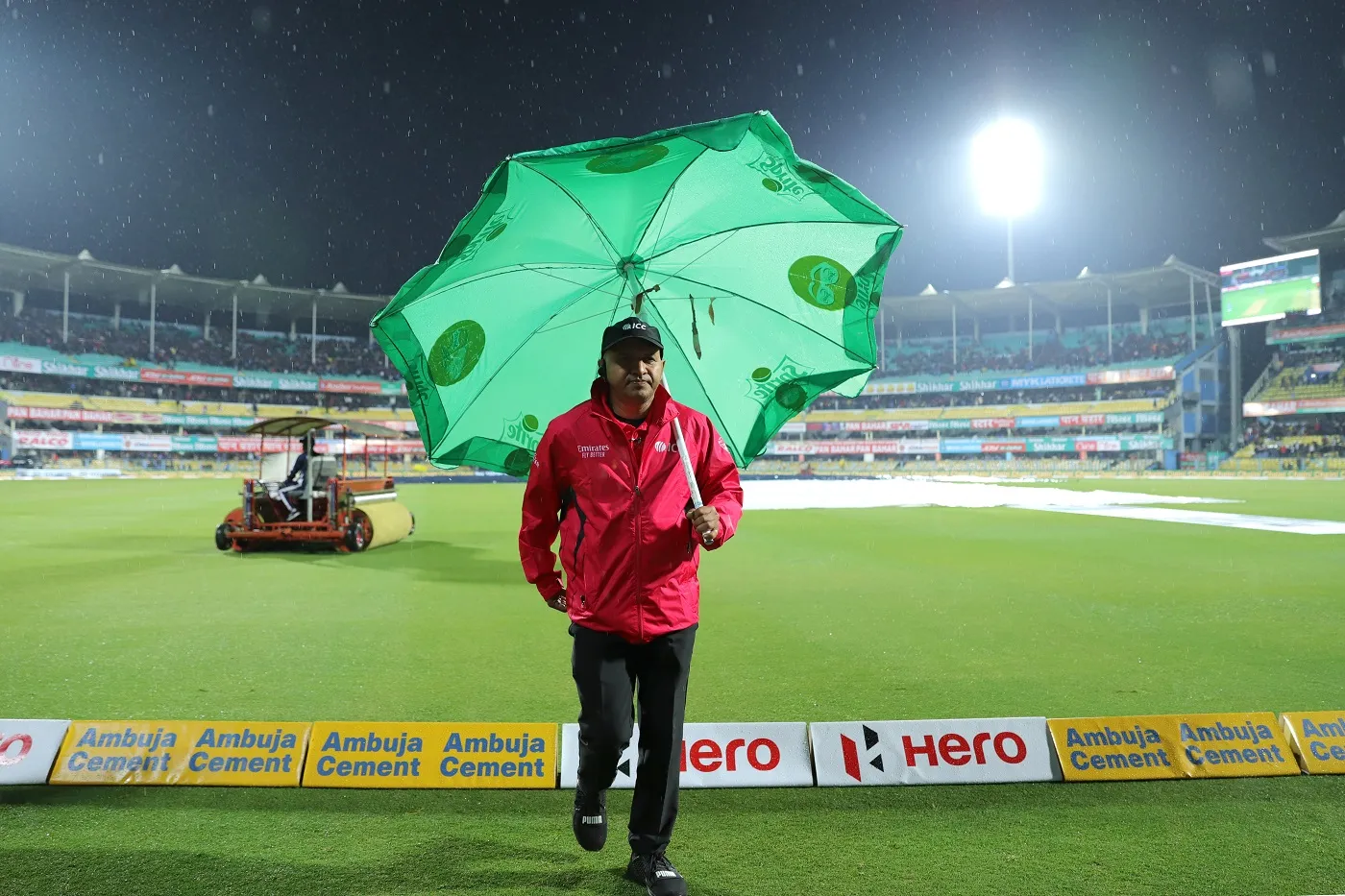Cricket is a game of uncertainty, and it is not always possible to complete a match due to weather conditions or other unforeseen circumstances. In such cases, the Duckworth-Lewis-Stern (DLS) method is used to calculate the target score for the team batting second. In this blog, we will explain the DLS method, its benefits, and its disadvantages.
What is the Duckworth-Lewis-Stern (DLS) Method ?

The DLS method is a mathematical formula that is used to calculate the target score for the team batting second in a limited-overs cricket match that has been interrupted by rain or other factors. The formula takes into account the number of overs that have been lost and the number of wickets that have fallen, among other factors.
The DLS method was first introduced in 1997 by Frank Duckworth and Tony Lewis and was later modified in 2014 to include the contribution of Steven Stern. The method has been adopted by the International Cricket Council (ICC) and is used in all ICC-sanctioned limited-overs matches.

Basic rules for applying the DLS method :
The Duckworth-Lewis-Stern (DLS) method is a complex mathematical formula that is used to calculate the target score for the team batting second in a rain-affected limited-overs cricket match. Here are the basic rules for applying the DLS method:
- Overs Lost: The first step in applying the DLS method is to calculate the number of overs that have been lost due to rain or other factors. This is done by subtracting the number of overs that have been bowled from the total number of overs that were scheduled to be bowled.
- Resources Remaining: The next step is to calculate the number of resources that remain for the team batting second. This takes into account the number of wickets that have been lost, as well as any other factors such as the number of powerplay overs that remain.
- Adjusted Target: Once the overs lost and resources remaining have been calculated, the DLS formula is used to adjust the target score for the team batting second. This takes into account the run rate required to win the match, as well as the resources available to the batting team.
- Real-Time Calculation: The DLS method allows for real-time calculation of the target score, which means that it can be adjusted throughout the match as the number of overs lost or wickets taken changes.
- Boundary Count Rule: In the event of a tie, the boundary count rule is used to determine the winner of the match. This means that the team that has scored more boundaries in their innings (excluding sixes) is declared the winner. However, this rule has been controversial in the past, and the ICC has since announced that it will be removed from all future ICC events.
- Reserve Day: If a match cannot be completed on the scheduled day due to rain or other factors, a reserve day may be used to complete the match. In such cases, the DLS method is still applied to determine the target score for the team batting second.
Example of how the Duckworth-Lewis-Stern method can be applied in a cricket match:
Assume that Team A scores 250 runs for the loss of 4 wickets in a 50-over match. Due to rain, the match is reduced to 40 overs per side, and Team B is set a revised target of 200 runs.
After 20 overs, Team B has scored 100 runs for the loss of 2 wickets. However, rain again interrupts the match, and play is suspended for 30 minutes. During this time, the DLS method is used to recalculate the target score for Team B based on the number of overs lost and the resources remaining.
The DLS method takes into account the following factors:
- Overs Lost: 10 overs have been lost due to rain, so the match is now a 40-over match.
- Resources Remaining: Team B has lost 2 wickets and has 8 wickets in hand. They have not used their powerplay overs yet, so they have 6 powerplay overs remaining.
- Adjusted Target: Using the DLS formula, the target score for Team B is adjusted to 173 runs. This means that they need to score 73 runs from the remaining 20 overs at a run rate of 3.65 runs per over.
Play resumes after 30 minutes, and Team B continues their innings. They eventually reach the target score of 173 runs in the 37th over, winning the match by 4 wickets.
This example demonstrates how the DLS method can be used to adjust the target score in a rain-affected match, taking into account the number of overs lost and the resources remaining for the team batting second. By recalculating the target score in real-time, the DLS method ensures that the match can continue without undue delay and provides a fair result for both teams.
Advantages of the DLS Method

- Provides Fair Results: The DLS method ensures that the team batting second has a fair chance to win the match, even if the match has been shortened due to external factors. This is achieved by adjusting the target score based on the number of overs lost and the number of wickets fallen.
- Faster Decision Making: The DLS method allows for quicker decision making in rain-affected matches as the target score can be calculated in real-time, allowing the match to continue without undue delay.
- Takes into Account the Importance of Each Ball: The DLS method takes into account the importance of each ball in a limited-overs match and adjusts the target score accordingly. This means that a team that loses fewer wickets will have a higher target score than a team that loses more wickets.
Disadvantages of the Duckworth-Lewis-Stern Method

- Complex Formula: The DLS method is a complex formula that requires trained officials to apply it correctly. It can be difficult to understand for casual fans of the sport, which can lead to confusion and frustration.
- Susceptible to Manipulation: The DLS method is susceptible to manipulation, particularly in situations where teams may deliberately lose wickets to improve their chances of winning. This can lead to accusations of gamesmanship and undermine the integrity of the sport.
- Does Not Always Provide a Fair Result: While the DLS method aims to provide a fair result, it does not always do so. In some cases, it may be impossible to determine a target score that accurately reflects the abilities of both teams, which can lead to a result that is perceived as unfair.
LBW Rules in Cricket
Decision Review System (DRS) in Cricket
Crickgo People also Ask :
The DLS method is a mathematical formula used to adjust the target score in limited-overs cricket matches affected by rain or interruptions to ensure a fair outcome.
The DLS method is employed to account for the lost time due to weather or other interruptions and to provide a revised target score for the team batting second in rain-affected matches.
The DLS method calculates the par score based on the number of overs remaining, wickets lost, and the resources available to the batting side, factoring in various historical data and statistical analysis.
The DLS method considers factors like the current run rate, wickets in hand, target total, and the overs lost due to weather interruptions.
The DLS target score is adjusted based on the number of overs remaining and the number of wickets lost. If the match is shortened due to rain, the target will be reduced accordingly.
Yes, the DLS method is applicable to T20 matches, as well as One-Day Internationals (ODIs) and other limited-overs formats.
The method was initially developed by Frank Duckworth and Tony Lewis. After Professor Steven Stern’s contributions to its improvement, it became known as the Duckworth-Lewis-Stern (DLS) method.
While there are alternative methods, the DLS method is widely accepted and used in international and domestic cricket due to its reliability and accuracy.
Umpires and match officials have access to DLS tables and software, allowing them to calculate and adjust target scores based on real-time data.
Yes, the DLS method can sometimes be a subject of debate, especially in closely fought matches. Teams may have differing opinions on whether the revised target is fair. However, it remains an essential tool for ensuring fairness in rain-affected games.

